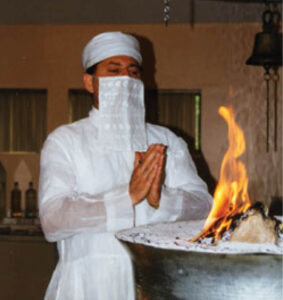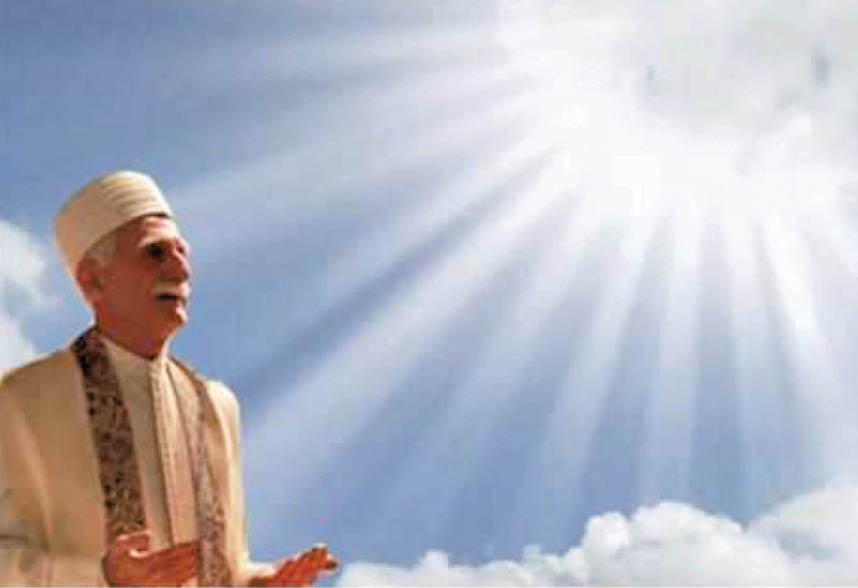Are Zoroastrians Fire-Worshippers? Is Fire the Son of Ahura Mazda?
Noshir Dadrawala, scholar in Zoroastrian religion and culture, responds to queries sent in by readers seeking answers to various religious and cultural questions
Query From Parsi Times reader, Adar Balsara: “My non-Parsi friends often say that Parsis are fire-worshippers and so my query is whether fire is simply a symbol of our religion or do we worship fire? My parents tell me that when praying the Atash Niyaesh we refer to fire as the son of Ahura Mazda. Is this correct?”
Noshir Dadrawala responds:
Christians often pray before the Holy Crucifix so does that make them Cross-worshippers? Muslims pray facing the Holy Kaaba does that make them Kaaba-worshippers? In like manner, Zoroastrians pray facing the sun or the moon or the flowing waters or when at a fire-temple the Holy consecrated fire. Does this then make us sun-worshippers or moon-worshippers or water-worshippers or fire-worshippers?
 Worship of Divinity through Fire:
Worship of Divinity through Fire:
Simply put, the Zoroastrian scriptures recommend that Avesta prayers should be offered facing the appropriate Kebla or Kibla i.e., a sacred object or sacred place worthy of reverence – be it the radiant sun, the luminous moon, the flowing waters or the sacred fire at home or the consecrated fire at an Agiyari or Atash Bahram.
The Supreme Divinity or the Source of all Creation is unseen to the human eye and unconceivable to the ordinary human mind. However, fire is the closest that the human eye and mind can get to visualize or experience Divinity. Fire has no body and yet seems alive in the form of dynamic light, heat and energy. It seems to come from nowhere on kindling and yet it disappears on dousing.
In our opinion, your question can be best answered in the words Firdausi Toosi, who states in the Shah-nameh (the Book of Kings), “Ma gui ke ātash parastā budand, Parastande-e pāk yazdān budand”, which translated means, “Do not call them Fire-Worshippers – they are worshippers of Yazdan (Divinity) through Fire.”
Indeed, therefore, when a devout Zoroastrian prays before the Holy Fire, he/she in essence, offers worship to Ahura Mazda through Fire.
Son of Ahura Mazda:
To answer your second query, in the Atash Niyaesh or the litany to fire we address the Holy Fire as Atash Puthra Ahurahe Mazdao. Most scholars interpret the term Puthra (Sanskrit Putra) as son. However, some eminent scholars like Er. Kavasji Edulji Kanga have interpreted the meaning of the term Puthra from the Sanskrit root ‘pu’ meaning to purify or to render pure or source of purifying or cleaning and translated the term as ‘purifier’.
Thus, Kangaji translates Atash Puthra Ahurahe Mazdao as “O Fire, the purifier (of all things) pertaining to Ahura Mazda.” Hence, Zoroastrians perceive fire as both a purifying force and the son or life and light giving energy of Ahura Mazda.
Fire as Divine Channel:
At duly consecrated fire temples the Holy Fire is seen as a Divine Medium or Channel or Mediator through which the Supreme Divinity is worshipped, just the way Agni is central to the Yajna (Avestan Yasna) ceremony in the Vedic tradition.
Before entering a Fire Temple, we should first wash our hands and face and then untie and retie the kushti which is worn around the waist. By washing, we clean ourselves physically and by performing the Kushti ritual, we clean our aura or our unseen personal atmosphere. Thus, we go before the Holy Fire, clean in body, spirit and mind. We cover our heads with a cap or a scarf as a mark of respect and so that hair from our head does not fall and pollute the holy temple.
When we pray before fire, we see light instead of darkness. We see Adar, the energy that gives life and provides energy to this world. We also feel the energy of Ardibehesht or Truth and Righteousness. In other words, we see and feel all that is good that is given to us by God and through Fire as a Divine Channel we send our prayers and gratitude up to the Creator.
We offer fragrant sandalwood as fuel to the fire, which in turn gives off fragrance. When offering sandalwood to fire, we should visualize our offering as a gift to God and God accepts the gift with fragrance. It also reminds us that throughout life, we should continue to offer to this world our good thoughts, words and deeds which in turn will make the world fragrant. We apply the holy ash to our forehead as a way of ritually connecting to the fire and reminding ourselves that ultimately, we will all be reduced to ash.
The priests perform the Boi ceremony before the holy fire, five times a day. They strike the bell while reciting the words, ‘Dushmata, Duzukht, Dusvarast’ – rejecting all evil thoughts words and deeds. Thus, during the ceremony, the priest rings the bell and symbolically drives out evil in thought, word and deed from this world.
Indeed, when a Zarathushti reveres or prays before fire, he/she in essence, offers worship to Ahura Mazda through Fire!
- Celebrating Women And Equality - 8 March2025
- How The Greeks Viewed Ancient Persians - 1 March2025
- Moon And Moods - 22 February2025
